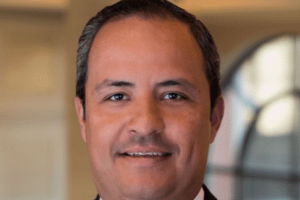Medtronic’s VP for North Latin America, Héctor Orellana, outlines the largest company’s new vision for that region, their efforts and challenges to continue gaining market access, and explains why the company is not shying away from Central America but rather doubling down.
Can you begin by explaining Medtronic’s structure in the region and the scope of your responsibilities?
We are organized in different operating units, each one managing the commercial operations for our 70 specialties, doing the management in a transversal way. I lead the people in charge of those operating units within the territories. We have commercial organizations in Central America with offices in Panama and Costa Rica. We manage the rest of the region’s countries from those offices through partnerships with distributors in order to be able to cover the whole market.
The commercial side is responsible for the financial results of the whole territory, from sales to spending. The manufacturing operations, which we do have in the region, are managed from elsewhere, but there is a collective effort from the 1,350 employees we have in Central America.
As for my experience, I have been in charge of Mexico, Central America and the Caribbean through different roles in the past. Today, after Medtronic’s last reorganization, I am in charge of Mexico and Central America, including Cuba.
How have the different markets you oversee been performing?
We are leaders in many categories including the surgical business, cardio and diabetes. However, it is important to understand each market’s peculiarities regarding access to our technology. Our priority, at the end of the day, is reaching more patients. We believe that medical technology means nothing if patients are not able to benefit from it, which is why we want to get market access in order to help patients. Within the region, there are different levels of access but there is a uniform effort among the governments to improve that side of the equation; we are working closely with them.
The organization aims to develop its relationship with the public and private sectors so the technology can reach patients. I do see institutions in these markets that, while already having great technology and infrastructure available, are deeply committed to obtaining more.
The company’s annual report mentions expanding its technologies in emerging markets as one of its top three priorities. What does that mean for Central America and the Caribbean?
For us, the fact that technology is accessible to people is the measure of our success. We have identified the main issues in the region and access is the main one. There are countries where 60 percent of healthcare is provided by the government, which means that we have to be part of those public healthcare systems, always complying with fair processes and abiding by our ethics. Another challenge for a company as innovative as Medtronic is educating doctors so they can make the most out of the technology we provide through equipment and tools; it is a great opportunity for us.
Medtronic is not a “medical devices company”, but rather a medical technology company that utilizes devices to deliver its technology.
How do you go about educating health professionals in this region?
We do it mainly through our own programs. We emphasize and make a great effort in communication programs through which we can show all of the technology that Medtronic can provide. In many cases, we provide support inside the operating room and directly with patients. In the case of diabetes, we have trainers that reach out to them and guide them about the best use of the technology.
Also, through our compliance mechanisms, we participate in different events done by medical associations and universities.
Getting into the different healthcare systems across the region, what are the main similarities and differences? What is the current state?
I believe that their situation does not differ much from the rest of the developing world. The systems have resources limitations, but there is a permanent push from doctors to access more and better technology because they understand that they provide better results for their patients.
We offer our best available technology through public tenders; we do not limit our offering but do adapt it in terms of volume and availability. There are countries, such as Costa Rica, where public health covers over 60 percent of the population; Panama is a similar case with 50-60 percent, but other countries are not there yet. We have to understand the governments and their particular situations.
Our focus is on doctors because ailments do not care about resources. There has to be an effort to get the technology to the sites because it is just not possible to transport everyone to another place to get treated.
How does Medtronic work with the public sector in terms of the affordability of your products?
Fortunately, we have an ample portfolio of products and solutions that allow us to deploy new business models that help our stakeholders take advantage of the best technology, without increasing the available budgets. Most of the markets in Central America require registration and we are making an effort to register all of our technology.
The next step is developing a good relationship with the healthcare systems. We are not asking for more resources, but we are working hard on education programs to demonstrate why our technology always add value to healthcare systems.
Our peacemaker technology, for example, has advanced greatly and can avoid open surgery so patients can recover much more quickly.
The company had a change in leadership when Geoff Martha took over the CEO role in April of last year. What vision has he outlined for your organization?
There is an important change in mindset in terms of being closer with the markets, in the decision-making process, partnering with stakeholders, whether they are patients, doctors or payers. Our CEO understands the necessities of each individual market, the differences among them, and has provided the necessary freedom to accelerate our decision making. The new mindset is all about behaving as leaders in all markets and therapeutic areas. That is the change being asked of us.
Mr Martha recently said that COVID-19 vaccines will help Medtronic reach pre-pandemic growth levels by fiscal fourth quarter 2021. Will that be the case in Central America and the Caribbean?
Our organization is most definitively working to be in line with that statement. We know that Medtronic has to be there, with patients, doctors and decision-makers. We have not gotten away from the markets or asked that our organizations fall back. On the contrary, we are looking to be closer and always present.
Saying that we are in a better position compared to other geographies would not be correct. The reality is that we have to wait for the healthcare systems to make their own decisions. Costa Rica, for example, feels confident in returning to some elective surgical procedures; but Panama, on the other hand, is lagging because they feel that it is not the right time. You will find other countries in Central America that are preparing to resume some surgeries because they understand that it is creating a health problem. The postponement of so many procedures is negatively affecting patients. Routine surgeries are becoming emergency surgeries.
With the acquisition of Digital Surgery, one of the leaders in surgical artificial intelligence, Medtronic says that it is positioning itself to lead in data and analytics, calling it “the next big frontier in surgery.” How is AI being introduced to your region?
The region represents a great opportunity to develop AI and data analysis. It is important to understand that AI is not limited to a research centre; it is embedded in our technology and devices. For example, the PillCam is a capsule that contains a camera and is a tool for directly visualizing the small bowel to detect and monitor abnormalities. All of this is complemented with artificial intelligence, allowing for better diagnosis.
We want to obtain a surgery robot in Central America as part of one of the company’s programs.
One of the main challenges in being part of the new AI and data analytics bet from the company might be the level of digitalization and the availability of electronic health records in the region, is that correct?
Some systems are advanced in the quest for electronic health records. Costa Rica is leading the way, but I expect that the rest will follow. They need to go on that quest because it will greatly improve the care for patients. I do not know how fast they will get there, but there are efforts being made in that direction.
Not having a medical background, you have spent over 16 years in the MedTech industry. What motivates you about this industry?
I had the privilege of being invited to this industry many years ago. I am motivated by knowing that my work allows me to help people live a healthier life and that my work such an impact on patients. I can proudly say that I am in a position to really help people. It may sound like a cliche, but very few industries allow you that opportunity.







